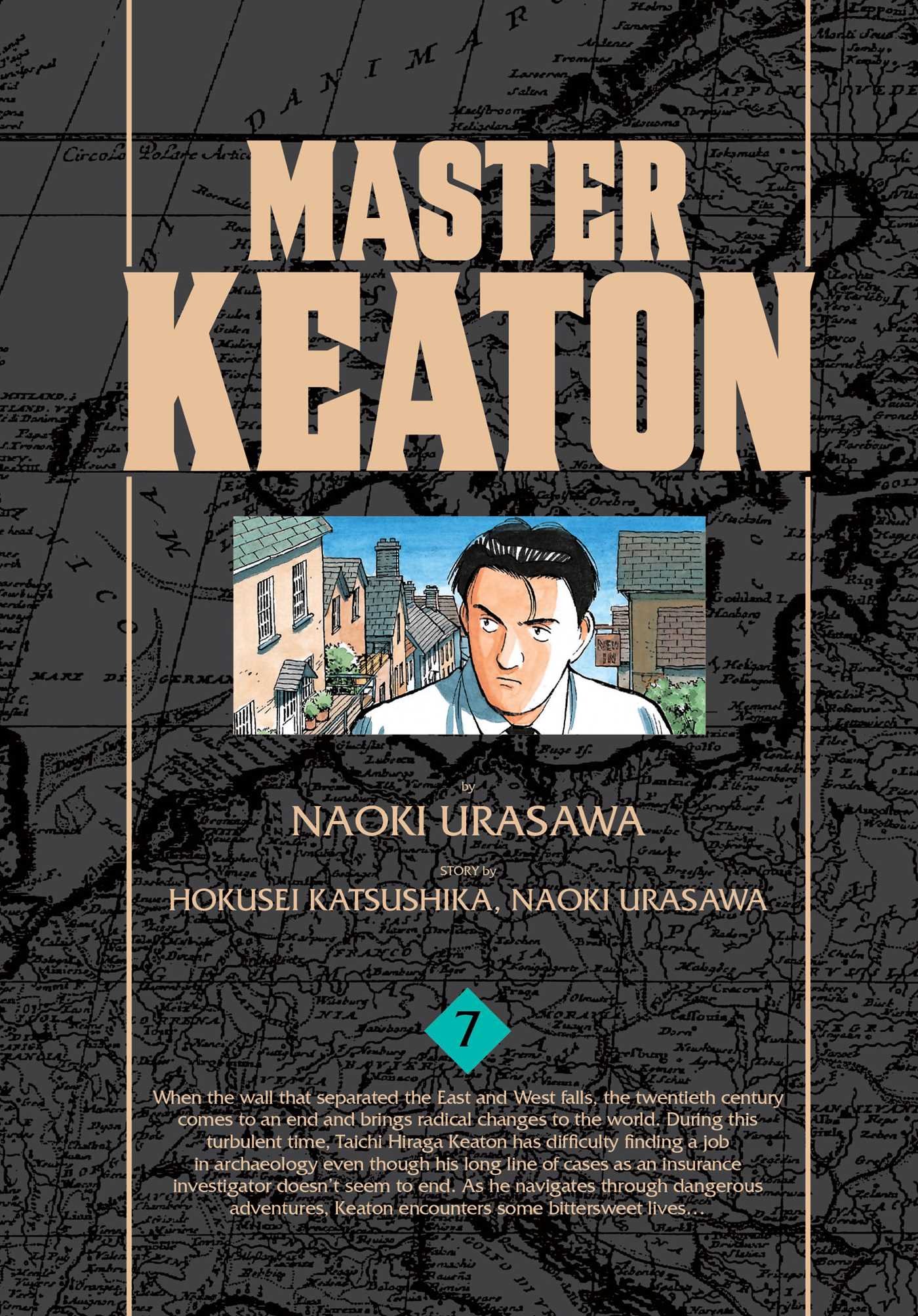Volume 7 of Master Keaton only has one experimental chapter, “Whisky Cat Village,” while the other eleven fit the form of Keaton finding himself at the perilous center of a mystery. Most readers will notice immediately the experimental nature of “Whisky Cat Village,” as the titular character, Keaton, is conspicuously absent from this story, and the manga creators, Naoki Urasawa, Hokusei Katsushika, and Naoki Urasawa flex their storytelling skills to craft a satisfying short story outside of the normal confines of Keaton’s genre of investigative fiction. It feels like one of the crafted, engaging conversation pieces that end up in English 101 readers, and appropriately sits in the middle of Master Keaton Vol. 7 as a kind of interlude and tells a simple and satifying story of loyalty to friends, to cats, and, above all, to whisky. It stands up well next to the best of the more literary Master Keaton stories, such as “Small Blue Lady,” or “Long Ago Summer Pudding.”
While the rest of these chapters do follow the typical form of Master Keaton stories, they are by no means formula fiction, because just as Keaton takes chances in his investigation and finds uncommon solutions, so too does the creative team of mangaka take chances in their storytelling. Probably most indicative of this in this volume is “In the Shadow of Victory.” a postmodern story in which closure is even less satisfying than real life. Instead of a pat solutiona and a moral at the end, we discover that a serial killer is seeking justice for a fallen comrade and a gang rape victim, and it is hard not to be sympathetic to his point of view; on the other hand, his ultimate target, the rapist that conspired to kill his friend, is a despicable character. The authors play at length with this moral ambiguity, knowing that while we may sympathize with the killer’s mission, we are filled with a mixture of sorrow and relief that the law, and not the killer’s vendetta, prevails. The reader will have a less mixed reaction to the fate of the Colonel that not only participated in the gang rape and murder of the woman, but then ordered the only dissenter to be assigned to a Desert Storm invasion force so as to be killed for his knowledge of the event. The Colonel escapes justice for his rape, murder, and conspiracy to silence all knowledge of the event, although he does get backhanded by his superior and discharged from his career. On the other hand, justice is served on the serial killer for his successful murders of the other soldiers that particpated in the rape. A more modernist predecessor to this story would either end by justifying the vendetta due to its nauseating targets, or taking the high road of moral absolutism that the law must be upheld despite circumstances. As I’ve said before in other reviews of Master Keaton, these stories have many postmodern characteristics, and this story is probably the best example of the postmodern tendency to moral relativism.
While Master Keaton Vol. 7 is a shade less complex than Vol. 1 or Vol. 2, both of which I’ve reviewed on NerdSpan, Master Keaton is still one of my two favorite Viz manga (the other being Food Wars), and I would bet that this book is as good or better than any other graphic novel published in the month of June. Unlike many comics and manga, however, for which I usually tell people to just jump in and start anywhere, Master Keaton deserves to be started from the beginning. Master Keaton shows, to the most ardent of snobs, that serial fiction characters, and serial fiction itself like the sequential arts, can be literary; Master Keaton also shows, to the most entrenched and conservative forces in the mainstream comic industry, that serial fiction characters can develop in a highly satisfying way over the course of their career. Readers should not deprive themselves of one of the most nuanced character studies in sequantial art, and read all of Master Keaton.
VIZ Media provided a review copy.




